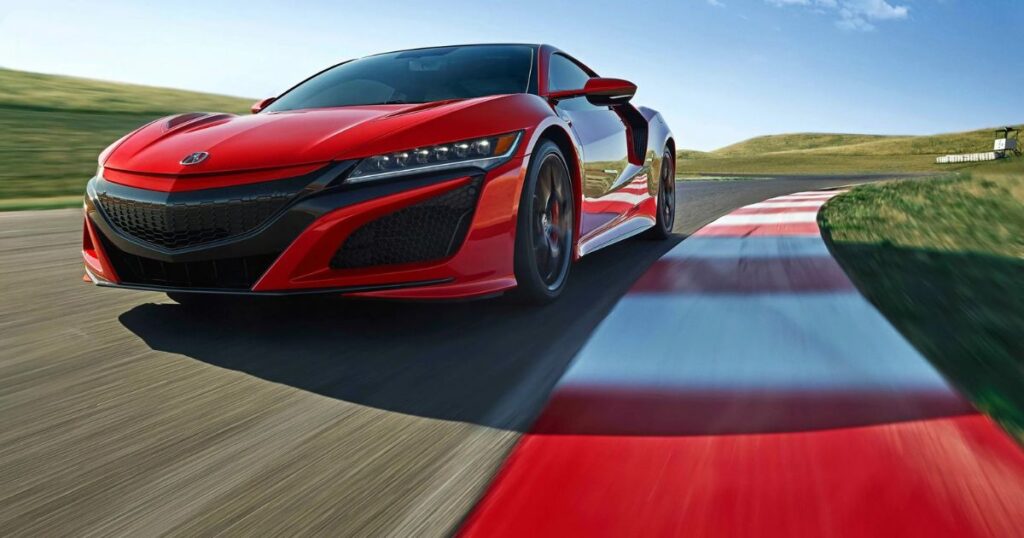Imagine cruising down the highway, the engine humming steadily when you approach a long, enticing on-ramp. With a simple push of a button labeled “Sport,” your mild-mannered family sedan suddenly transforms into a snarling, rubber-burning performance machine. That, dear driving enthusiast, is the magic of sport mode – a setting that unleashes your car’s true power and agility at the touch of a button.
SPORT MODE IN A CAR – WHAT DOES IT DO?
Sport mode is a vehicle setting that alters various components to prioritize pure performance over comfort or fuel efficiency. By engaging this mode, you’re essentially telling your car’s computer to divert all its focus toward maximizing power output, acceleration, and handling prowess. It’s the automotive equivalent of giving your daily commuter a double shot of adrenaline.
WHAT ARE THE DIFFERENT DRIVING MODES?

Modern vehicles often have several driving modes tailored to different driving styles and priorities. Here are the typical options you’ll find:
- Normal/Default Mode: The standard setting for daily driving, balancing performance, comfort, and efficiency.
- Comfort Mode: Optimized for a smooth, luxurious ride by softening the suspension and favoring fuel economy over power delivery.
- Eco Mode: Maximizes fuel efficiency by limiting performance and adjusting components like the air conditioning and transmission behavior.
- Sport Mode: The focus of this article is sport mode, which prioritizes outright performance by increasing engine output, sharping steering, and stiffening the suspension.
Some high-end sports cars may offer additional modes like a “Track” setting for all-out racetrack performance or a “Snow” mode for enhanced traction on slippery surfaces.
WHAT DOES SPORT MODE DO IN A CAR?
Now that we’ve set the stage let’s dive into how sport mode transforms your car’s driving experience by altering various components and systems.
1: BOOSTS ENGINE PERFORMANCE
The first order of business for sport mode is to crank up the engine’s power output. It does this by:
- Increasing Fuel Flow: Sport mode tells the engine to pump more fuel into the combustion chambers, resulting in a more potent air-fuel mixture and, consequently, more power.
- Advancing Ignition Timing: By adjusting when the spark plugs fire, sport mode can extract more energy from each combustion cycle.
- Varying Turbo/Supercharger Behavior: For turbocharged or supercharged engines, the sport mode may alter the boost pressure or adjust wastegate settings to increase forced induction and power delivery.
The result? A significantly more responsive throttle and a surge of power you can feel with every flex of your right foot. That gentle family hauler accelerates with the ferocity of a caged lion finally set free.
2: BOOSTS TRANSMISSION PERFORMANCE
If you’re driving an automatic transmission, sport mode works magic here, allowing the engine to rev higher before shifting gears. This accomplishes two things:
- Keeps the Engine in the Power Band: By holding each gear longer, the engine stays in its optimal rev range for peak power delivery.
- Faster, More Aggressive Shifts: When sport mode does command a gear change, it happens with a satisfying “POW!” as the transmission swaps cogs with lightning speed and assertiveness.
The result is neck-straining acceleration as your car claws its way through the gears, relentlessly building speed. You’ll leave stoplights in a cloud of vaporized rubber – a delightful experience, assuming you have a fresh set of tires installed.
3: LOWERS SUSPENSION PROFILE
While sport mode works its magic under the hood, it’s also transforming your car’s suspension setup. By stiffening the shocks and lowering the ride height, your vehicle takes on a lower, more aggressive stance that helps maximize performance in two key ways:
- Increased Aerodynamic Downforce: A lower ride height reduces aerodynamic drag and increases downforce, pressing the car harder into the road surface for improved grip.
- Lower Center of Gravity: With the car’s mass closer to the ground, its center of gravity is lowered, reducing body roll in corners and improving overall handling dynamics.
Depending on the vehicle, sport mode may lower the ride height from 0.5 to 1 inch (1.3 to 2.5 cm). While this may not seem like much, it can make a noticeable difference in how planted and responsive your car feels when attacking twisty roads or hot-lapping a racetrack.
4: SHARPENS THE STEERING
The final piece of the sport mode puzzle involves dialing up the steering ratio for quicker, more responsive inputs. By increasing the turning effort required for a given amount of steering wheel rotation, sport mode removes any dead space or sloppiness from the steering system.
This heightened steering feel gives you a more direct connection to the front wheels, allowing you to carve through corners precisely and confidently. Combined with the lower ride height and stiffer suspension, your car will feel like it’s been injected with a severe dose of driving dynamism, ready to tackle even the most winding stretches of tarmac.
WHAT ARE THE PROS AND CONS OF SPORTS MODE?
As magical as sport mode may seem, it has drawbacks. Like most things in life, unleashing your car’s full performance potential comes with trade-offs that are important to consider.
PROS OF SPORTS MODE
PERFORMANCE
Let’s start with the obvious: sport mode exists to maximize performance, and it delivers on that promise in spades. By increasing power output, improving acceleration, and enhancing handling dynamics, sport mode allows you to truly experience the full potential of your vehicle’s engineering prowess.
TRANSMISSION
For drivers of automatic-equipped vehicles, sport mode’s ability to optimize transmission behavior is a game-changer. Those lightning-fast, perfectly rev-matched gear changes will have you grinning from ear to ear and forgetting all about the joys of rowing your gears (at least temporarily).
LOWER SUSPENSION
While the stiffened, lowered suspension may make for a rougher ride, it also unlocks a new level of cornering capability. Suddenly, your car feels glued to the road, able to pull incredible lateral g-forces through even the tightest turns without breaking a sweat (or a tire’s grip).
SHARPER STEERING
There’s something deeply satisfying about a steering system that responds with pinpoint accuracy to your inputs. Sport mode’s tighter steering ratio gives you a heightened sense of control and confidence, especially when navigating technical stretches of road or simply hustling around town.
CONS OF SPORTS MODE
UNCOMFORTABLE DRIVING EXPERIENCE

While the performance benefits of sports modes are undeniable, they come at the cost of ride comfort. With a stiffened suspension setup and lower ride height, you’ll feel every bump, pothole, and expansion joint in the road. For longer journeys, this can quickly become fatiguing.
HIGH FUEL CONSUMPTION
Squeezing more power out of an engine inherently requires burning more fuel. As a result, you can expect a noticeable increase in fuel consumption when driving in sport mode – perhaps as much as 30% higher than in a more economical setting like eco mode.
INCREASED WEAR & TEAR
Driving at higher performance levels also accelerates wear and tear on various components, from the engine and transmission to the tires and brakes. While sport mode is perfectly safe for occasional use, prolonged aggressive driving will necessitate more frequent maintenance and part replacements down the line.
BEST PRICE AUTO SUPPLIES UK
Speaking of maintenance, if you plan on taking full advantage of your car’s sport mode capabilities, keeping up with routine service and having access to quality replacement parts is crucial. At Best Price Auto Supplies UK, we offer a wide range of automotive parts and supplies at unbeatable prices so you can keep your performance machine running at its peak.
Read More Posts
How Long Do Car Batteries Last?
What Is A Hybrid Car? The Comprehensive Guide
FAQs
When should I use sports mode in my car?
Use sports mode when you want a more dynamic driving experience, like spirited driving or on twisty roads.
Does sport mode make the car faster?
Sport mode can make the car feel faster by adjusting throttle response, gear shifts, and sometimes suspension settings for a sportier feel.
Can I drive in sports mode all the time?
While you can always drive in sports mode, it may decrease fuel efficiency and stress the engine and transmission more.
Is it OK to ride in sport mode?
Riding in sport mode is generally okay, but be mindful of road conditions and traffic, as sport mode can make the car more responsive and aggressive.
Conclusion
Sport mode is a thrilling feature that allows you to tap into the full potential of your car’s performance capabilities with the simple press of a button. By increasing power output, optimizing transmission behavior, enhancing handling dynamics, and sharpening steering feel, sport mode transforms even the most mundane family hauler into a corner-carving, asphalt-devouring beast.
However, as with most things in life, this level of performance does come with trade-offs. Increased fuel consumption, accelerated wear and tear, and a firmer, less comfortable ride are all factors to consider before engaging in sport mode for extended periods.







